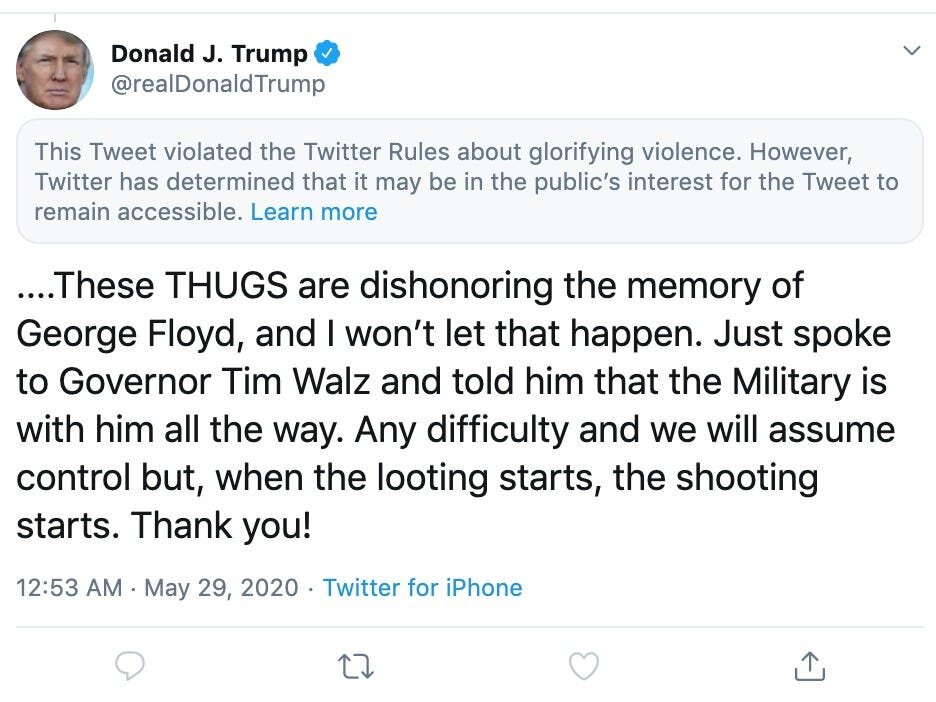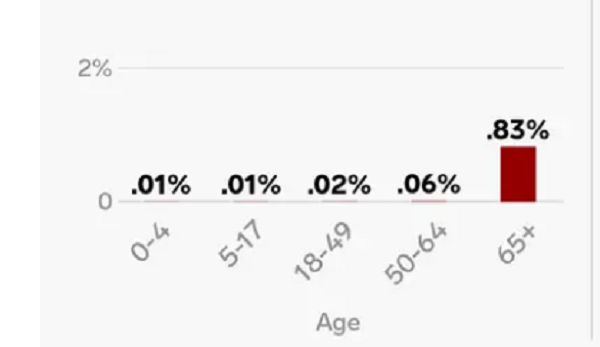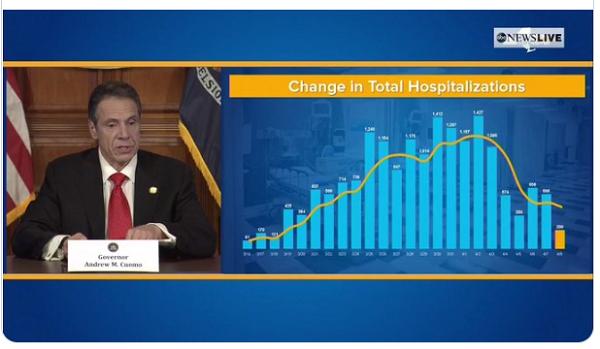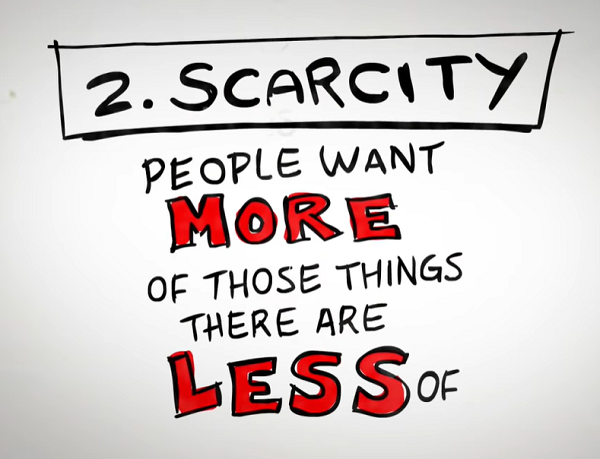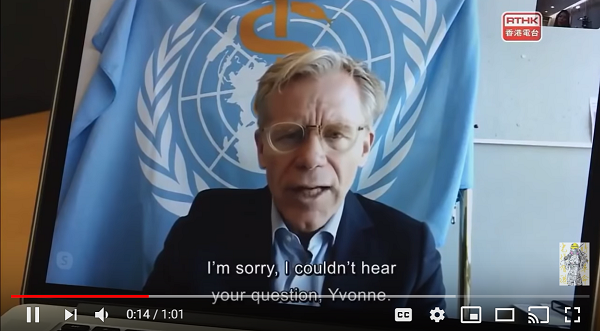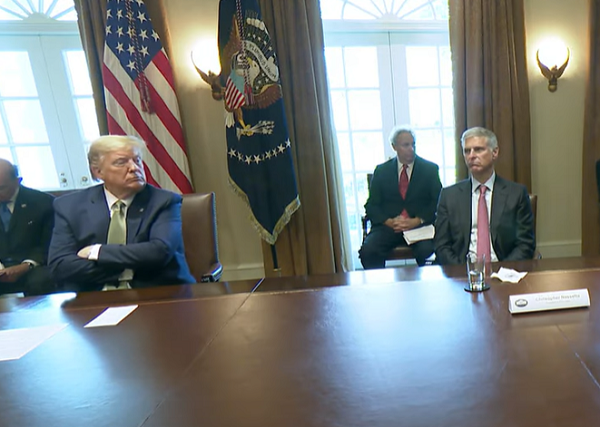Disneyland Announces "Sunsetting" of Annual Pass Program
With economic uncertainty during the COVID-19 pandemic, Disneyland remains closed, and the company announced the end of its annual pass program. The 40-year-old program offered unlimited park visits, exclusive discounts, and other benefits.
Disney’s statement explains the reasons and offers customers ways to get a refund for existing passes. In the segment below and another for Premier Passholders, the writers use “sunsetting” three times. The euphemism is a curious choice, and I wonder why “ending” isn’t used instead. Perhaps “cancelling” sounds too harsh?
“Sunsetting” indicates phasing out, and some passholders can enjoy discounts for a limited time. But the program is clearly ending. Dictionary.com refers to a “sunset clause,” and a tech site provides this definition: “Sunsetting, in a business context, is intentionally phasing something out or terminating it.” Both have legal undertones and, in my view, should be avoided for a consumer audience.
Twitter Announces Ban of President Trump
Two days after the riots on the U.S. Capitol, Twitter announced a “permanent suspension” of President Trump’s account after a temporary suspension.
Comparing Twitter and Facebook’s message, on January 7, about a temporary suspension, is a lesson in writing structure. Whereas Mark Zuckerberg used the indirect organizational plan, Twitter’s message states the news right up front. Zuckerberg starts with the rationale and announces the decision at the very end. Twitter starts with the decision, and then provides explanatory text, including sample tweets and the company’s assessment.
Another difference between these messages is the writer. The Twitter post is unsigned, whereas Zuckerberg signed the Facebook message himself. Additional rationale for the decision is posted on the Facebook site. Both approaches could work, and analyzing the communication is (almost) as interesting as the decisions themselves.
Random note: “Permanent suspension” sounds odd to me. A suspension is something temporary.
Company
Permanent suspension of @realDonaldTrump
By Twitter Inc.Friday, 8 January 2021
After close review of recent Tweets from the @realDonaldTrump account and the context around them — specifically how they are being received and interpreted on and off Twitter — we have permanently suspended the account due to the risk of further incitement of violence.
In the context of horrific events this week, we made it clear on Wednesday that additional violations of the Twitter Rules would potentially result in this very course of action. Our public interest framework exists to enable the public to hear from elected officials and world leaders directly. It is built on a principle that the people have a right to hold power to account in the open.
However, we made it clear going back years that these accounts are not above our rules entirely and cannot use Twitter to incite violence, among other things. We will continue to be transparent around our policies and their enforcement.
The below is a comprehensive analysis of our policy enforcement approach in this case.
Overview
On January 8, 2021, President Donald J. Trump Tweeted:
“The 75,000,000 great American Patriots who voted for me, AMERICA FIRST, and MAKE AMERICA GREAT AGAIN, will have a GIANT VOICE long into the future. They will not be disrespected or treated unfairly in any way, shape or form!!!”
Shortly thereafter, the President Tweeted:
“To all of those who have asked, I will not be going to the Inauguration on January 20th.”
Due to the ongoing tensions in the United States, and an uptick in the global conversation in regards to the people who violently stormed the Capitol on January 6, 2021, these two Tweets must be read in the context of broader events in the country and the ways in which the President’s statements can be mobilized by different audiences, including to incite violence, as well as in the context of the pattern of behavior from this account in recent weeks. After assessing the language in these Tweets against our Glorification of Violence policy, we have determined that these Tweets are in violation of the Glorification of Violence Policy and the user @realDonaldTrump should be immediately permanently suspended from the service.
Assessment
We assessed the two Tweets referenced above under our Glorification of Violence policy, which aims to prevent the glorification of violence that could inspire others to replicate violent acts and determined that they were highly likely to encourage and inspire people to replicate the criminal acts that took place at the U.S. Capitol on January 6, 2021.
This determination is based on a number of factors, including:
President Trump’s statement that he will not be attending the Inauguration is being received by a number of his supporters as further confirmation that the election was not legitimate and is seen as him disavowing his previous claim made via two Tweets (1, 2) by his Deputy Chief of Staff, Dan Scavino, that there would be an “orderly transition” on January 20th.
The second Tweet may also serve as encouragement to those potentially considering violent acts that the Inauguration would be a “safe” target, as he will not be attending.
The use of the words “American Patriots” to describe some of his supporters is also being interpreted as support for those committing violent acts at the US Capitol.
The mention of his supporters having a “GIANT VOICE long into the future” and that “They will not be disrespected or treated unfairly in any way, shape or form!!!” is being interpreted as further indication that President Trump does not plan to facilitate an “orderly transition” and instead that he plans to continue to support, empower, and shield those who believe he won the election.
Plans for future armed protests have already begun proliferating on and off-Twitter, including a proposed secondary attack on the US Capitol and state capitol buildings on January 17, 2021.
As such, our determination is that the two Tweets above are likely to inspire others to replicate the violent acts that took place on January 6, 2021, and that there are multiple indicators that they are being received and understood as encouragement to do so.
Zuckerberg's Message About President Trump's Account
Facebook has decided that President Trump will no longer use its platform for his messages—at least for a while. The decision came after riots at the U.S. Capitol and after Twitter and Facebook suspended the president’s account. The tech companies said that the president violated its rules by inciting violence and/or making false claims about the election.
YouTube blocked a video of President Trump expressing sympathy for the protestors and calling them “special.” The tech platforms had tried labeling posts, but the president’s false claims were still believed.
Some call this time an “inflection point": “Hey Mark Zuckerberg, @jack, @SusanWojcicki and @sundarpichai -- Donald Trump just incited a violent attack on American democracy. Is that FINALLY enough for you to act?!" At this point, Twitter has not yet permanently banned the president from tweeting.
Zuckerberg uses the indirect style for his post, with the main point in the very last sentence. He makes his argument first, and then we read the decision. It’s an interesting choice, which might not convey the courage that people would like to see.
Additional analysis and rationale for the decision are posted on the Facebook site.
Robinhood's Misleading Communications
Investment app Robinhood will pay $65 million in fines for misleading customers. The 2013 start-up has grown rapidly, attracting younger, inexperienced investors with no-fee accounts and no minimums. But Robinhood generates revenue through “payment for order flow,” essentially a kickback from Wall Street firms and the same practice Bernie Madoff used to defraud investors.
Robinhood uses behavioral nudges and notifications to push users to invest in riskier stocks, resulting in higher trading volume, sometimes dramatic losses—and more revenue for the company. An NBC article describes the visuals:
When smartphone owners pull up Robinhood’s investment app, they’re greeted with a variety of dazzling touches: bursts of confetti to celebrate transactions, the price of bitcoin in neon pink and a list of popular stocks to trade.
Charles Schwab, meet Candy Crush.
A competitor compared the design to Las Vegas.
Of course, all is well when stocks go up, but when stocks decline, users have to make up the loss. For one 20-year-old man, his bill appeared to be $730,000, and he committed suicide.
Fauci: "Numbers Don't Lie"
Dr. Anthony Fauci, the lead infectious disease expert in the U.S., was asked whether the nation has the worst COVID outbreak, and he said, “Numbers don’t lie.”
CNN’s Dr. Sanjay Gupta interviewed the doctor at a Harvard School of Public Health forum. Dr. Gupta asked, “We're not quite 5% of the world's population, yet represent 20-25% of the world's infections ... I mean, that has to be the worst. Is it not the worst?"
Dr. Fauci responded, “Yeah, it is quantitatively if you look at it, it is. I mean the numbers don't lie.”
The doctors are looking at infections per capita. Of course, we could look at other measures. In this interview, President Trump considers the number of deaths as a percentage of those infected.
Discussion:
Do numbers lie? Can they? What about this book: How to Lie with Statistics?
Find evidence to both support and dispute the claim that the U.S. is the “worst.” What measures can you find? Which do you find more meaningful?
Zuckerberg Testifies About 2012 Emails
Mark Zuckerberg faced one particularly tense moment during the U.S. Congressional Antitrust Hearing. Rep. Jerry Nadler (D-NY) accused Facebook of antitrust activities in its acquisition of Instagram:
“Facebook, by its own admission ... saw Instagram as a threat that could potentially siphon business away from Facebook. So rather than compete with it, Facebook bought it. This is exactly the type of anti-competitive acquisition the antitrust laws were designed to prevent.”
Nadler’s conclusion is based on 2012 emails among Zuckerberg and his staff. In one email he wrote about Instagram:
“One way of looking at this is that what we’re really buying is time. Even if some new competitors springs up, buying Instagram, Path, Foursquare, etc now will give us a year or more to integrate their dynamics before anyone can get close to their scale again. Within that time, if we incorporate the social mechanics they were using, those new products won’t get much traction since we’ll already have their mechanics deployed at scale.”
Within an hour, Zuckerberg sent a second email, which some say proves his guilt:
“I didn’t mean to imply that we’d be buying them to prevent them from competing with us in any way.”
During the hearings, Zuckerberg defended the acquisition:
“I think the FTC had all of these documents ... and unanimously voted at the time not to challenge the acquisition. In hindsight, it probably looks obvious that Instagram would have reached the scale that it has today. But at the time, it was far from obvious.”
Discussion:
Research and describe relevant U.S. antitrust laws.
Read more about the 2012 emails and watch the hearings. How well did Zuckerberg defend the Instagram acquisition?
Did Zuckerberg’s follow-up email prove his guilt? Why or why not?
Company Statements About George Floyd's Murder
Business Insider has assembled a list of companies’ statements and promised actions following the killing of George Floyd and the public protests.
TikTok, General Motors, McDonald’s—many brands are jumping into the conversation and posting messages that are both placating and inspiring.
Discussion:
Read the list of statements and actions. Which sound most meaningful to you?
Should all brands post a message? Which should, and what is important to convey?
Facebook's Position on Twitter's Labeling
Facebook CEO Mark Zuckerberg weighed in on Twitter’s decision to fact-check and label some of President Trump’s tweets. In response to protests after the death of George Floyd, one tweet promised “when the looting starts, the shooting starts.” Twitter hid the tweet with a note that it “violated the Twitter Rules about glorifying violence.”
Another tweet claimed that “mail-in voting will lead to massive fraud and abuse,” and Twitter posted a warning to “get the facts.” Until now, Twitter had not enforced its policies for the president’s tweets.
Facebook is taking a different tack. CEO Mark Zuckerberg described the company’s position:
"I believe strongly that Facebook shouldn't be the arbiter of truth of everything that people say online. I think in general, private companies shouldn't be, especially these platform companies, shouldn't be in the position of doing that."
The Wall Street Journal editorial board defended Zuckerberg’s decision: “We wish Facebook would take a lighter touch when it comes to political speech overall.”
Discussion:
What’s your view of Twitter’s actions? Why do you think the company began labeling President Trump’s tweets now?
Should Facebook follow suit? How might each company’s mission play a role in its actions?
Jenner Pays for Frye Festival Post
The U.S. Federal Trade Commission (FTC) requires that paid endorsements are not misleading. Celebrities like Kendall Jenner cannot post support on social media for a product or organization without specifying that she is being paid to do so. The FTC publishes Endorsement Guides to clarify responsibilities.
Jenner promoted the 2017 failed Frye Festival, implying that Kanye West might perform. Although she was paid $275,000, she didn’t reveal the sponsorship. She has since been sued and will pay a $90,000 settlement, which may help some of the many associates of the festival who lost money in the venture.
To learn more about what happened to the Frye Festival—a major public relations and communication failing—see documentaries on Hulu and Netflix.
Discussion:
What are the ethical implications of celebrities endorsing products?
When a celebrity endorses a product, are you more likely to buy it?
If you’re familiar with the festival, describe what went wrong.
COVID-19 Crisis Communication for Reopening the U.S.
What comes after we “flatten the curve” of COVID cases? New York Times opinion writer Charlie Warzel warns that, without a clear communication strategy for what’s next, people will distrust leaders.
Warzel cites six communication guidelines from the report of a working group at The University of Minnesota, The Center for Infectious Disease Research and Policy (CIDRP).:
Don’t Over Reassure.
Proclaim Uncertainty
Validate Emotions—Your Audience’s and Your Own
Give People Things to Do
Admit and Apologize for Errors
Share Dilemma
Discussion:
How should U.S. officials communicate now? What do they need to accomplish, and how well are our current leaders meeting the challenge? In other words, do you agree with Warzel that our leaders are falling short?
Read the entire report. What other principles does the group recommend?
Analyze the report: the audiences, objectives, writing style, organization, and so on. What are the strengths, and how could it be improved?
A Leader Example in My Book Is Charged With Conspiracy
I was sad to see that Paul Kruse, former CEO of Blue Bell Creamery, has been charged with covering up the listeria breakout in 2015. In my book, Building Leadership Character, Kruse is a positive example of a leader who demonstrates vulnerability. His 2016 video announcing employee layoffs after the breakout was emotional and authentic.
Prosecutors say that Kruse delayed recalling tainted products, instructed employees to tell customers that product delays were caused by mechanical problems, and failed to take other appropriate action.
Blue Bell agreed to pay $19.5 million to the Department of Justice and posted a statement on its website, which focuses more on the future than on the past.
Discussion:
Can you reconcile both perspectives of Kruse as a leader? Could he be someone who covers up listeria and someone who gets emotional when talking about employee layoffs?
Assess the company’s statement. Who are the audiences, and what are the communication objectives?
Lysol Disputes Claims of Cure
During his press conference, President Trump questioned whether disinfectants could be used internally to fight the new coronavirus:
“I see the disinfectant that knocks it out in a minute, one minute. And is there a way we can do something like that by injection inside, or almost a cleaning? Because you see it gets inside the lungs and it does a tremendous number on the lungs, so it would be interesting to check that.”
The president later said, “I was asking a question sarcastically to reporters like you just to see what would happen.” But Lysol executives are concerned that people may take the idea seriously and try to treat themselves. Reckitt Benckiser, which makes Lysol products, issued a statement, “Improper Use of Disinfectants.”
Discussion:
Watch the president’s comment during the press conference. What’s your view of his speculation?
Analyze the Lysol maker’s response. What works well, and what could be improved? What is appropriate or inappropriate for a brand’s parent to dispute the president’s claim in this way?
Improving Column Charts
So many charts about COVID-19 could be improved. Here’s one from a Business Insider article, which compares death rates for the flu and COVID-19.
Discussion:
What issues do you see in the graphic? (Hint: Check the x axis, and describe what the percentage on the y axis represents.) How would you fix the problems?
What are the consequences of designing charts in this way?
Find another recent chart to analyze. In what ways does the graphic convey information accurately, and how does it fall short?
Misleading NY Covid-19 Chart
Thanks to Carl Quintanilla for posting this example of a misleading chart. New York Governor Andrew Cuomo has been lauded for his leadership during the coronavirus crisis, yet critics say one of the mainstay charts in his news conferences shows a skewed story.
When he shows this chart, Governor Cuomo describes, the decreasing numbers of new hospitalizations. The chart title is clear: “Change in Total Hospitalizations.” But what does the visual imply?
Similarly, he shows “Change in ICU Admissions” (approx.00:35 in the video).
Discussion:
Watch the first minute of the news conference. Is he clear, or could he be clearer in his explanation?
What’s your view of the two charts? Are they misleading? What are the possible consequences of showing the data in a misleading way?
How, if at all, should these charts be changed?
Luckin COO Fabricated Sales Data
Luckin’ Coffee, China’s largest coffee chain, is suffering the consequences of publishing false sales numbers. Ernst & Young discovered the misconduct, which took place in 2019, during an audit, concluding that “management personnel engaged in fabricated transactions which led to the inflation of the Company’s income, costs and expenses.” An investigation blames the chief operating officer and others.
A report details “the fraud and the fundamentally broken business,” including “smoking gun” evidence and “red flags.” The anonymous authors compare video recordings of store foot traffic to reported sales.
In response to the news, Luckin’s stock declined between 75 and 80%. Starting in February, when the anonymous report was made public, the company has been posting notices about the situation on its website.
Discussion:
Analyze the anonymous report, including the audiences, objectives, organization, writing style, etc. What works well, and how would suggest that the writer improve the report?
How well did the company address concerns? Begin with the first response in February.
What leadership character dimensions does this situation illustrate?
Does Persuasion by Scarcity Work?
Business communication students may learn about Robert Cialdini’s Six Principles of Persuasion, including scarcity. For example, a online retailer indicates “Only two left!” or “Only one left at this price!”
In a Wall Street Journal article, a researcher questions whether the “quantity scarcity” strategy works under all conditions. Dr. Christopher Tang explains new research:
“…scarcity messages work best with time-sensitive and perishable products such as hotel rooms or plane tickets, as well as unique items like collectibles or limited editions.
“They are less effective with durable goods such as home-improvement products or kitchenware, in part because they can give shoppers the impression that the product is being pushed because it is undesirable, lower quality, obsolete or discontinued. And in the case of items typically bought in larger quantities, such as partyware, lightbulbs and batteries, we found that scarcity messages can actually hurt sales by making shoppers believe they won’t be able to buy as much of a product as they want.”
To use the scarcity principle effectively, Dr. Tang suggests that retailers highlight quality, promote urgency, and offer product bundles
Discussion:
When have you seen the quantity scarcity at work? Did it persuade you to purchase something?
Think of a specific product that you might buy. How would you recommend that retailers use this strategy effectively to move remaining products?
WHO Official Bungles Interview
World Health Organization (WHO) senior adviser Bruce Alyward wanted to avoid a reporter’s question about Taiwan becoming a member of the organization. A video of the interview shows an awkward exchange, with Alyward remaining silent (but we still see him moving and hear sounds), saying “Sorry, I couldn’t hear your question,” asking the reporter to move onto another question, and then, finally, ending the call. During a follow-up call, Alyward refers to China and then abruptly ends the call.
Taiwan has had good success in controlling COVID-19, and the government claims to have warned the WHO back in December 2019 about the contagion.
As of today, Alyward’s name is removed from WHO’s website listing advisers to the organization.
Discussion:
What is a better way for Alyward to have handled the reporter’s question?
Why do you think the WHO ignored warnings from the Taiwanese government?
Starbucks Communication
The Starbucks website has been updated regularly with news about the company’s response to COVID-19. Near the top of the page is a link to “At-a-glance: What customers need to know about Starbucks response to COVID-19.”
The big news is that stores will offer only drive-thru service for the next two weeks. In a letter to Starbucks partners (employees), the company promised 30 days of pay whether they work or not.
Discussion:
Analyze both the public website and the letter to partners. Describe the audiences and communication objectives of each.
What organizational structure is used for these bad-news messages?
What does Starbucks do well in its communications? How can communications be improved?
How well does the company balance emotional appeal and logical arguments?
In this post, you see “Starbucks response” on the company’s website and “Starbucks partners” in my text. Neither has an apostrophe. Is that correct?
Tourism CEOs Meet with President Trump
President Trump invited CEOs of major tourism companies to discuss the COVID-19 response.
Hilton CEO Christopher Nassetta began by highlighting issues in the industry:
“Hilton’s been around 100 years -- we’ve never closed a hotel that wasn’t going to be demolished or rebuilding, The bulk of our hotels in the major cities are closing as we speak.”
Nassetta was also complimentary to President Trump and Vice President Pence and said that he wanted to protect employees. The president reassured him that they’ll be up and running soon, although both said the situation is currently a “disaster” “all over the world.”
Discussion:
How would you describe the purpose of this gathering? What are President Trump’s objectives?
Assess each of the CEOs during the meeting. How well did they represent their brand?
Confusing Pie Chart
A former student sent me this chart, and he didn’t have a source, but it’s a good example of what not to do when creating pie charts. What problems can you identify?
Discussion:
What principles of creating pie charts are followed, and how does the chart fall short?
Is the pie chart the best choice for this data? What would be a better choice and why?
What does the text imply?













